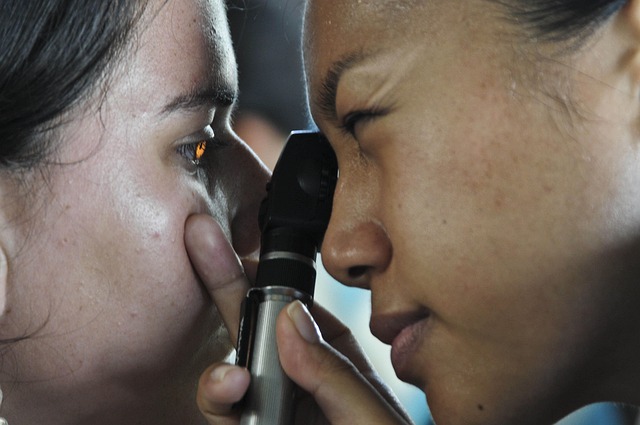Eye Floaters: What They Are, What Causes Them, and When to Get Help
Ever notice small dots, lines, or squiggles drifting across your vision-especially when you look at a bright sky or screen? These are called eye floaters, and while they are usually harmless, they can sometimes signal something more serious. This article explains what they are, what causes them, and when it is time to seek help.

What exactly are eye floaters?
Eye floaters are tiny specks or thread-like strands that appear to drift through your field of vision. They’re most noticeable when looking at a plain, bright background like a blue sky or a white wall. These visual disturbances can take various shapes, including dots, circles, lines, cobwebs, or cloudlike structures. While they may seem to be in front of your eye, they’re actually floating inside it.
What causes eye floaters to appear?
The primary cause of eye floaters is age-related changes in the vitreous, the gel-like substance that fills the back of your eye. As you get older, the vitreous begins to shrink and become more liquid. This process can cause tiny fibers within the vitreous to clump together, casting shadows on your retina. These shadows are what you perceive as floaters. Other causes can include eye injuries, diabetic retinopathy, or in rare cases, eye tumors.
Are eye floaters a sign of a serious problem?
In most cases, eye floaters are harmless and don’t require treatment. However, a sudden increase in the number of floaters, especially if accompanied by flashes of light or a loss of peripheral vision, could indicate a more serious condition such as a retinal tear or detachment. These situations require immediate medical attention to prevent potential vision loss.
How can eye floaters be treated?
For most people, no treatment is necessary for eye floaters. Over time, your brain may learn to ignore them, making them less noticeable. However, if floaters significantly impair your vision or cause distress, there are treatment options available. These include:
- Vitrectomy: A surgical procedure that removes the vitreous gel and replaces it with a saline solution.
- Laser therapy: Also known as laser vitreolysis, this treatment uses lasers to break up floaters, making them less noticeable.
- Eye drops: While not a cure, some eye drops claim to reduce the appearance of floaters by improving the health of the vitreous.
When should you see an eye doctor about floaters?
While occasional floaters are normal, certain situations warrant a prompt visit to an eye care professional. These include:
- A sudden increase in the number or size of floaters
- Flashes of light in the same eye as the floaters
- A shadow or curtain appearing in your peripheral vision
- Floaters appearing after eye trauma or surgery
- Eye pain or redness accompanying the floaters
Early detection and treatment of serious eye conditions can prevent vision loss, so it’s always better to err on the side of caution when it comes to sudden changes in your vision.
What are the latest advancements in eye floater treatment?
Recent years have seen advancements in the treatment of eye floaters, particularly in the field of laser therapy. Newer, more precise lasers have improved the safety and efficacy of laser vitreolysis. Additionally, researchers are exploring potential pharmacological treatments that could dissolve or reduce floaters without invasive procedures. While these advancements are promising, it’s important to note that not all treatments are suitable for every case, and the long-term effects of some newer treatments are still being studied.
Treatment options for eye floaters vary in effectiveness, risk, and cost. Here’s a comparison of the main treatment options currently available:
| Treatment | Procedure Type | Effectiveness | Risks | Cost Estimation |
|---|---|---|---|---|
| Vitrectomy | Surgical | High | Moderate to High | $2,000 - $7,000 |
| Laser Vitreolysis | Non-invasive | Moderate | Low to Moderate | $1,000 - $4,000 per eye |
| Eye Drops | Non-invasive | Low to Moderate | Low | $20 - $100 per bottle |
| Observation | Non-invasive | Variable | None | No direct cost |
Prices, rates, or cost estimates mentioned in this article are based on the latest available information but may change over time. Independent research is advised before making financial decisions.
In conclusion, eye floaters are a common visual phenomenon that most people experience at some point in their lives. While they’re often harmless, sudden changes in floaters or accompanying symptoms should prompt a visit to an eye care professional. With advancements in treatment options, those significantly affected by floaters have more choices than ever before. However, the decision to treat should always be made in consultation with an eye care specialist, considering the potential risks and benefits.
This article is for informational purposes only and should not be considered medical advice. Please consult a qualified healthcare professional for personalized guidance and treatment.
The shared information of this article is up-to-date as of the publishing date. For more up-to-date information, please conduct your own research.






